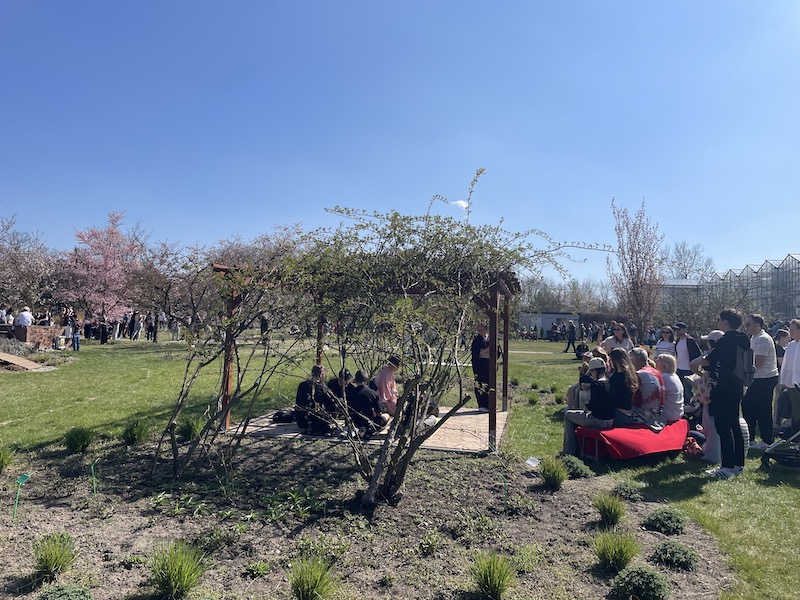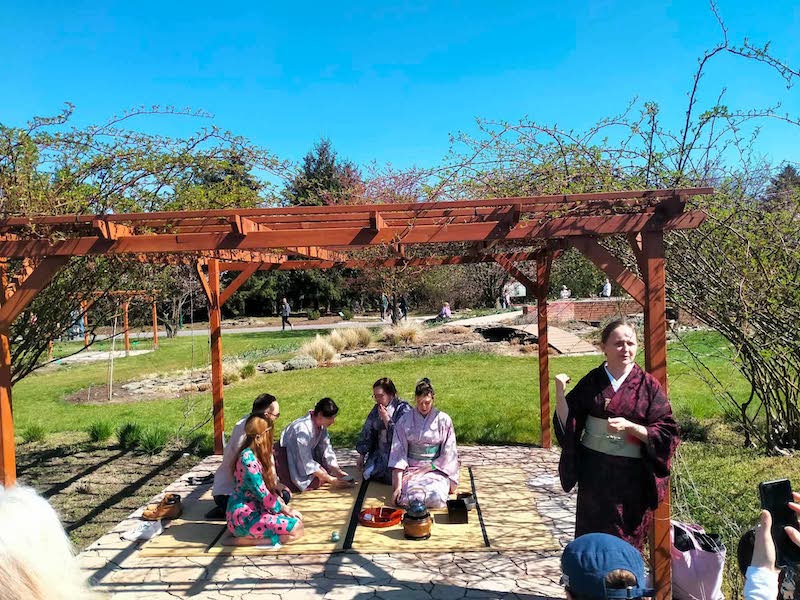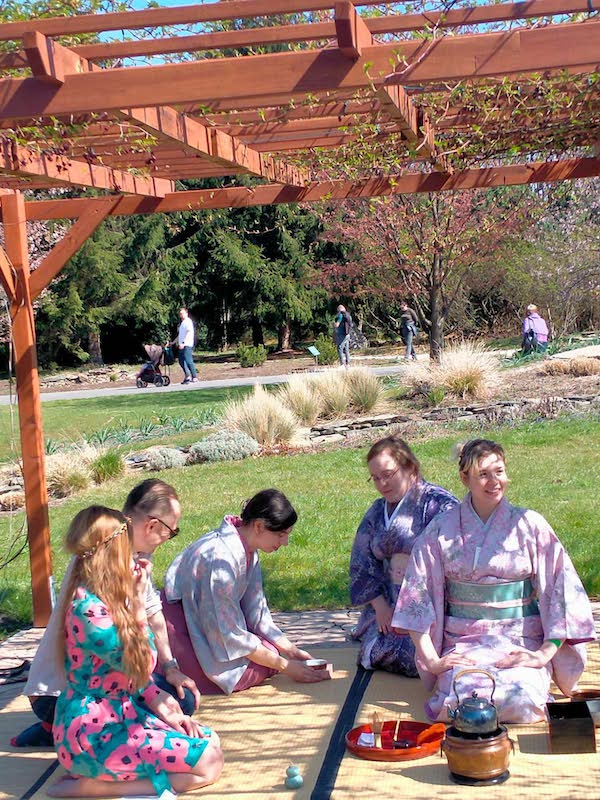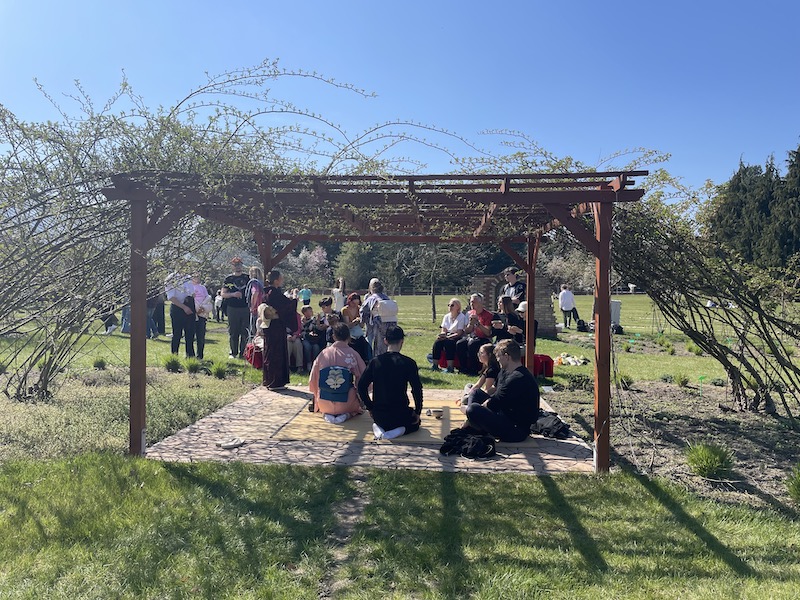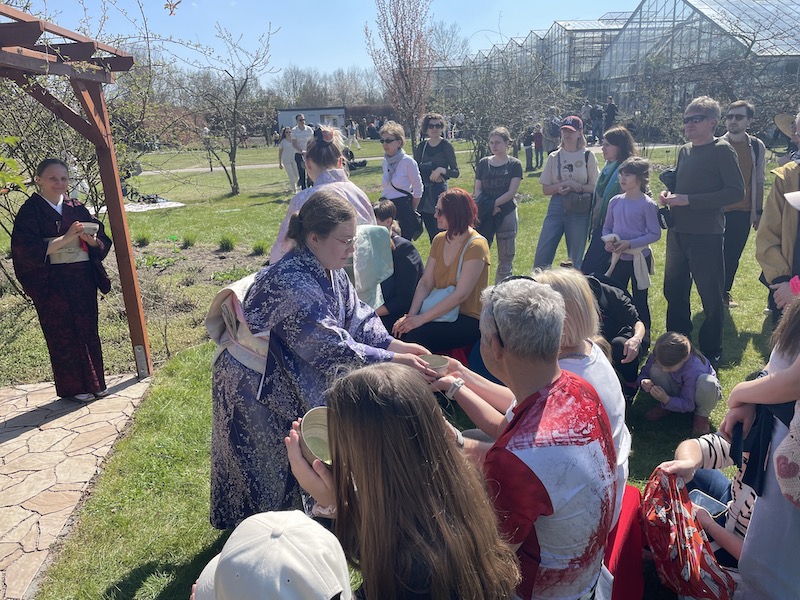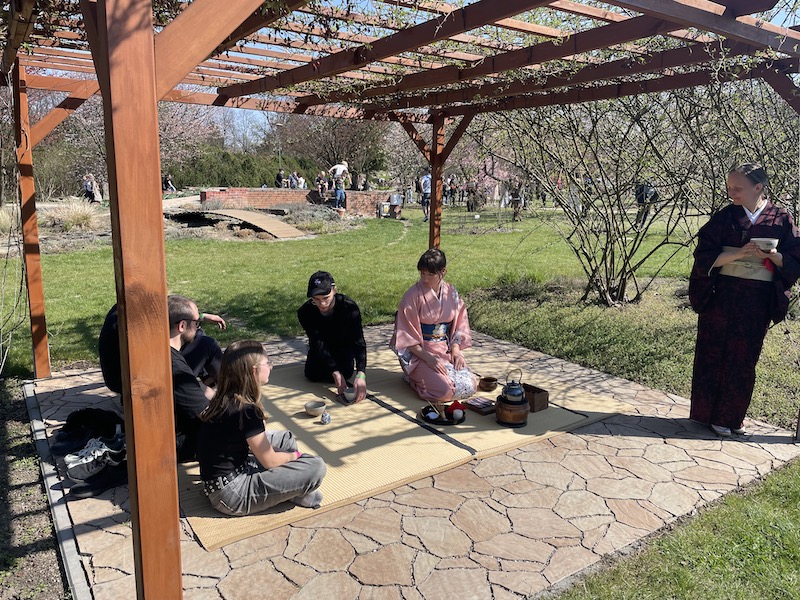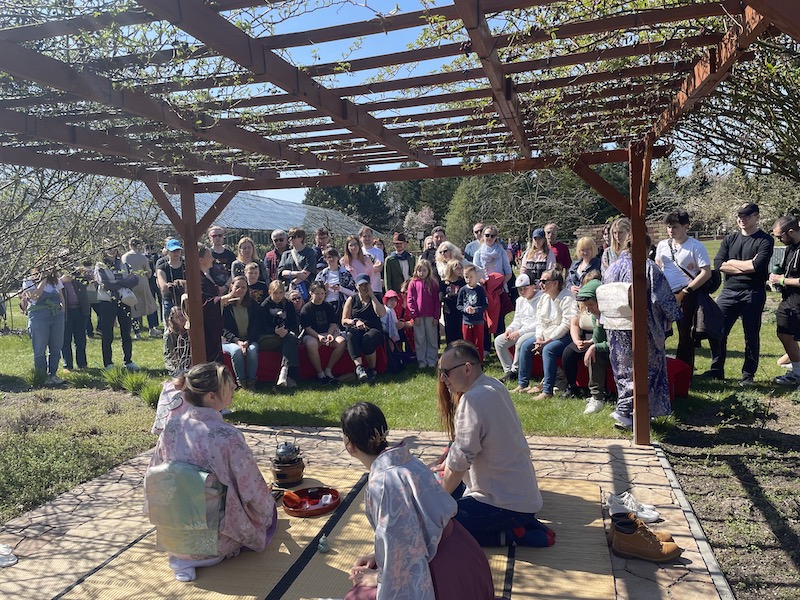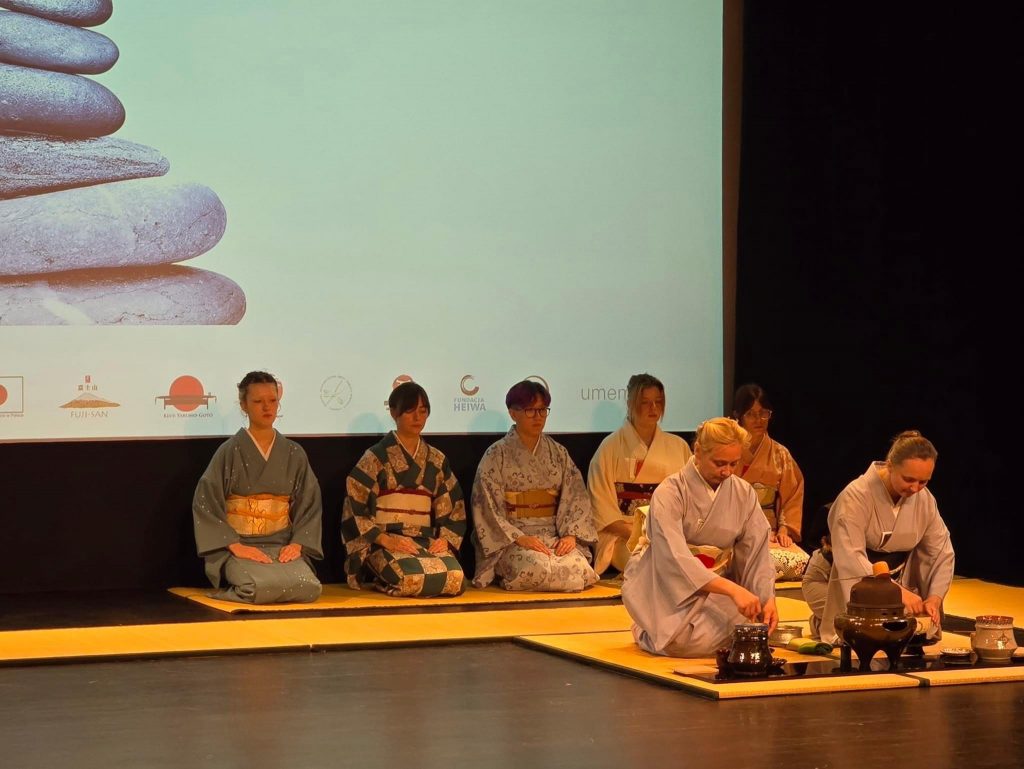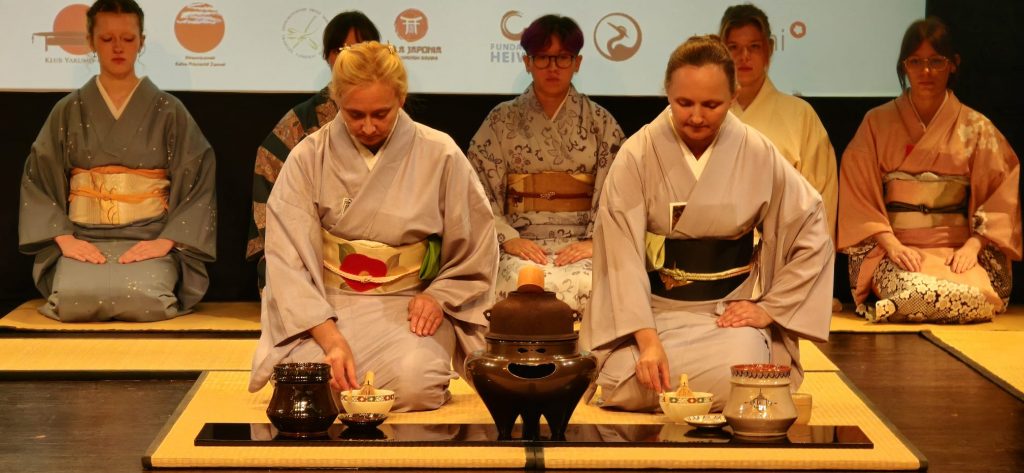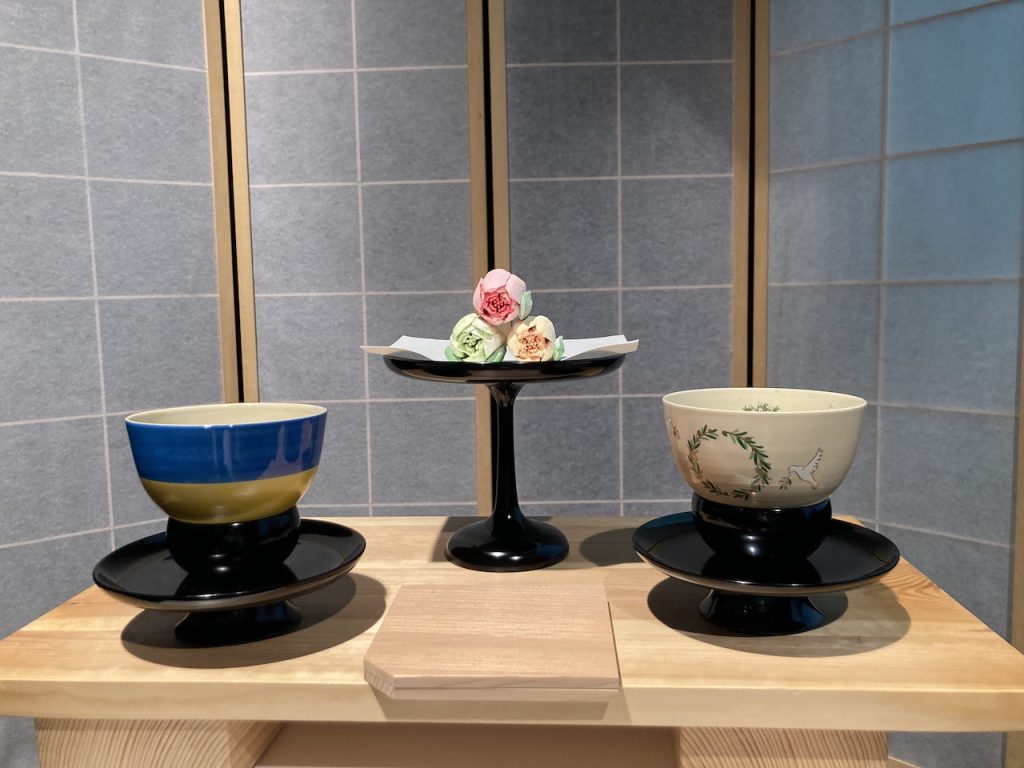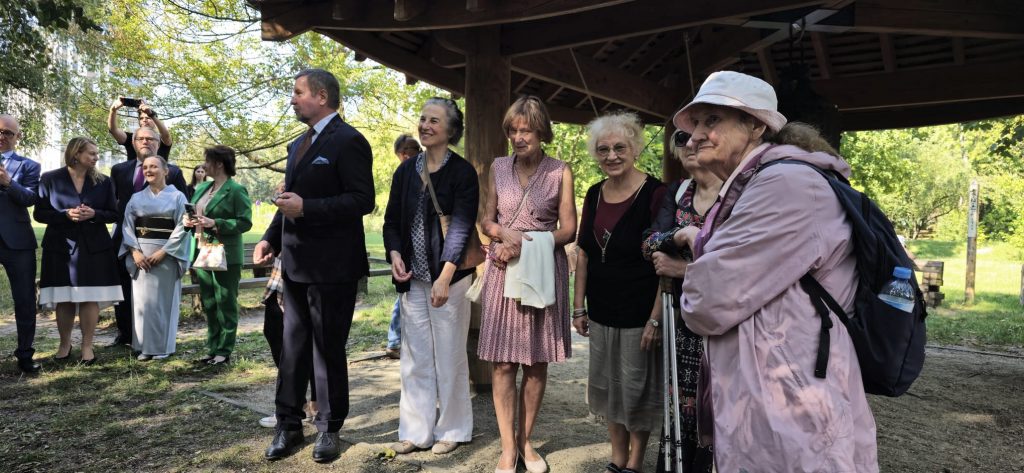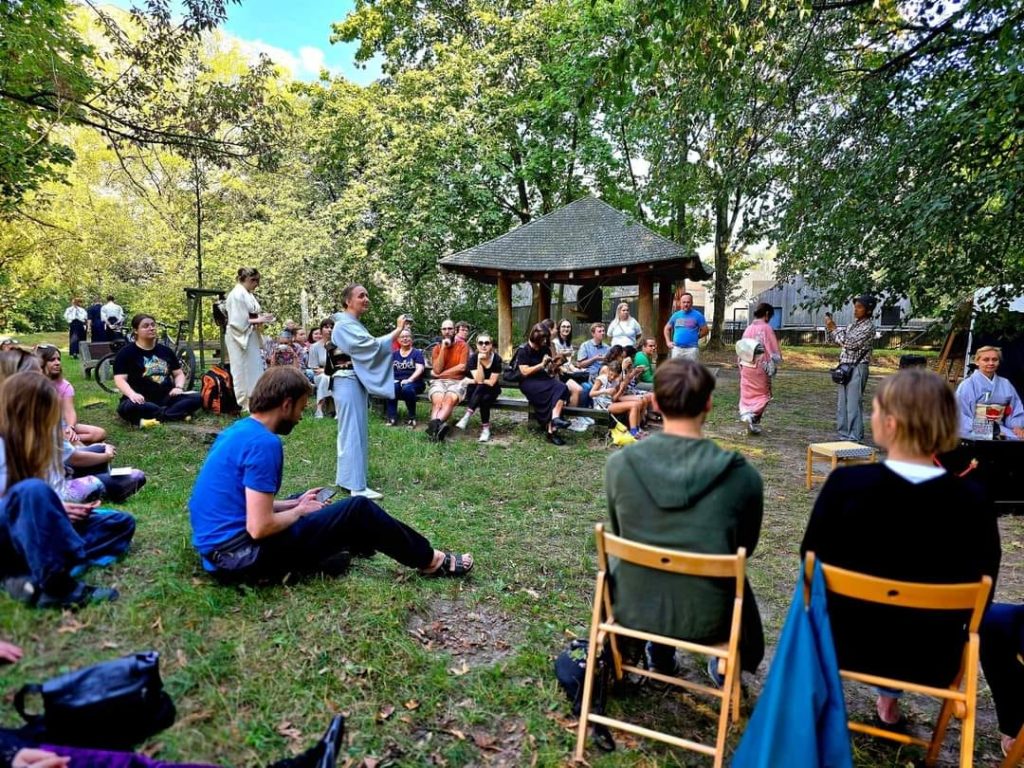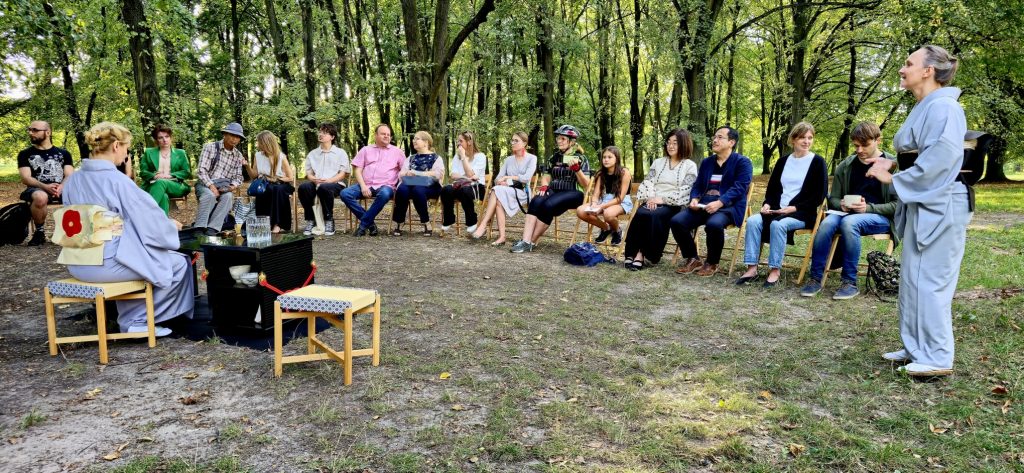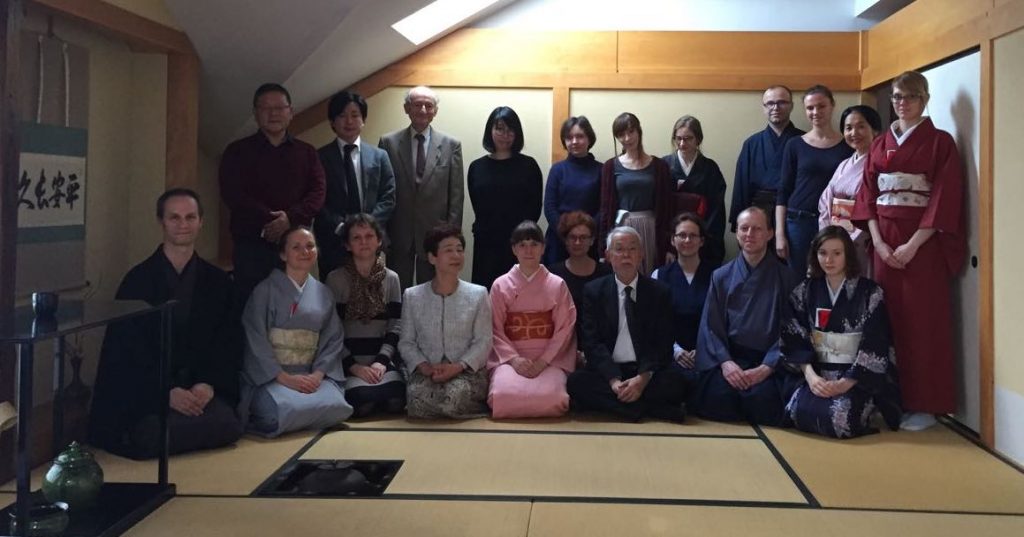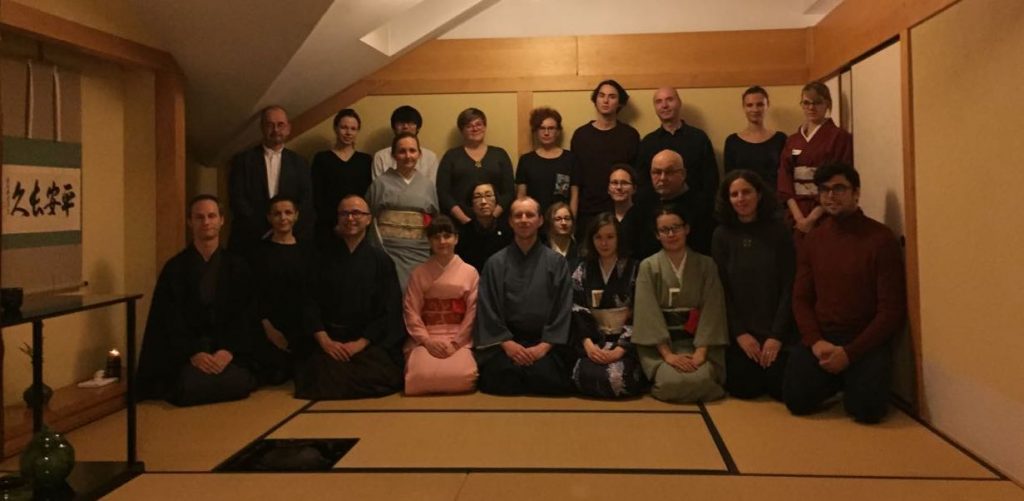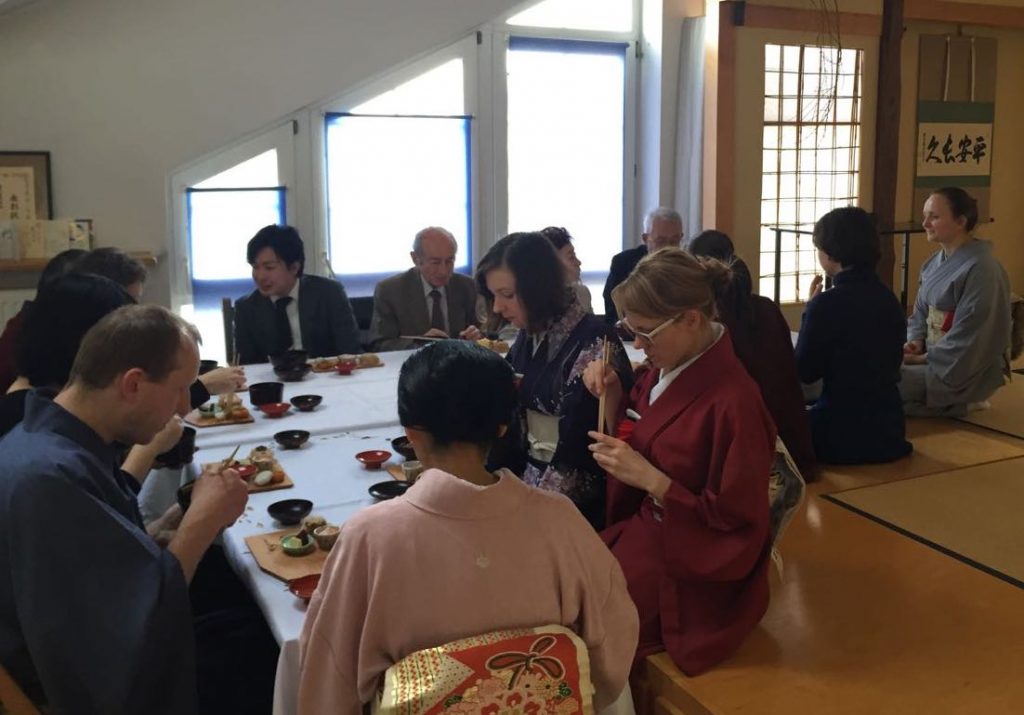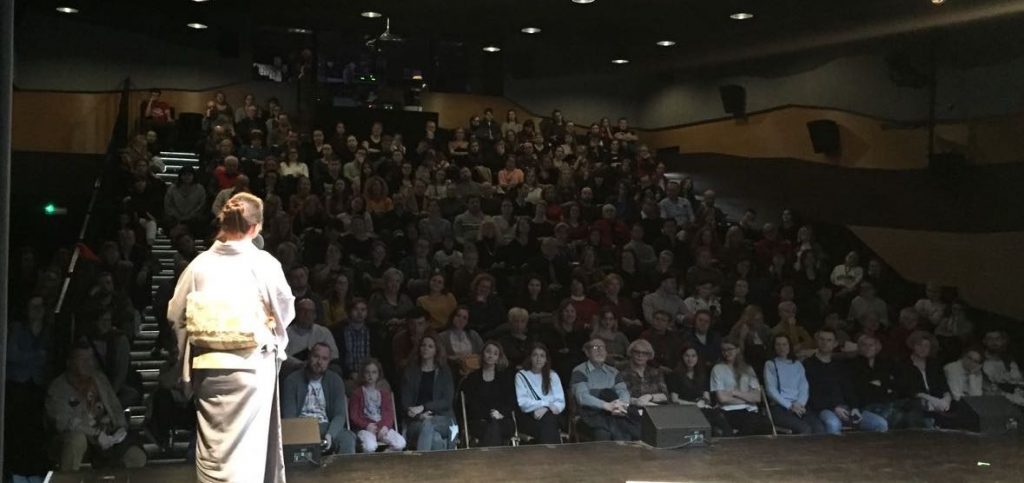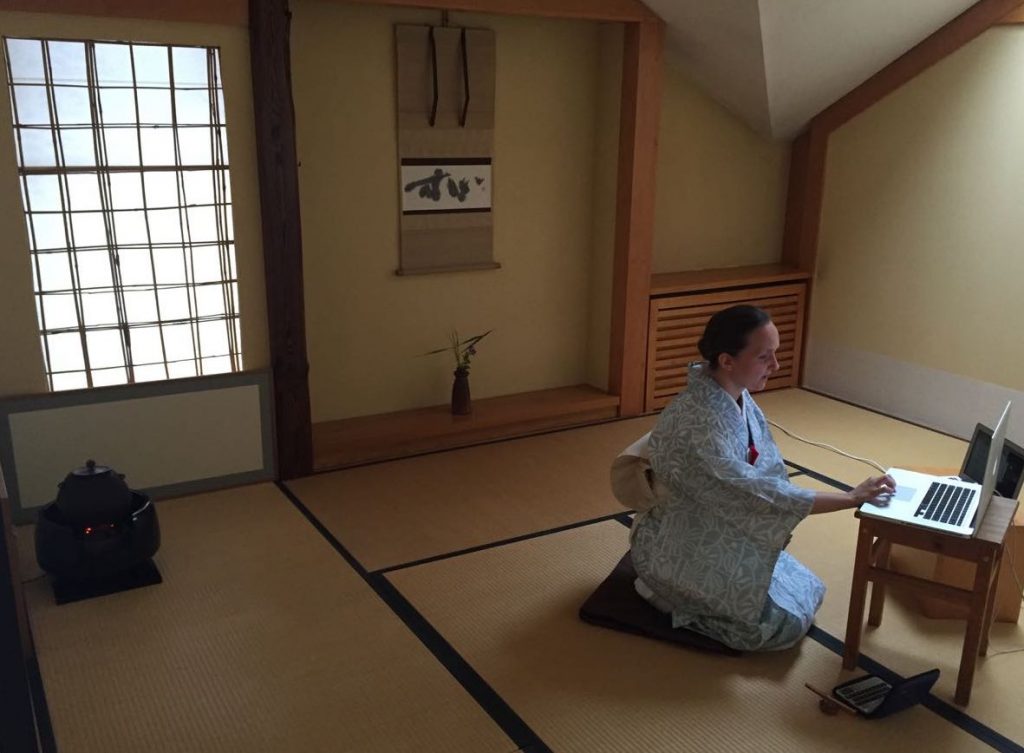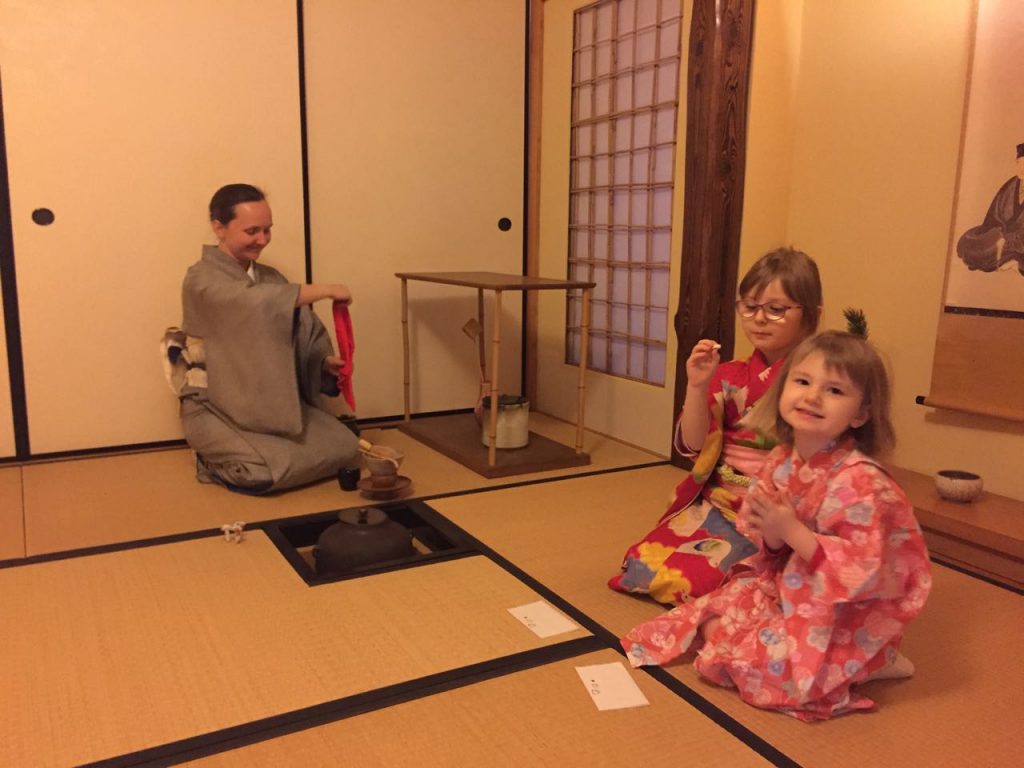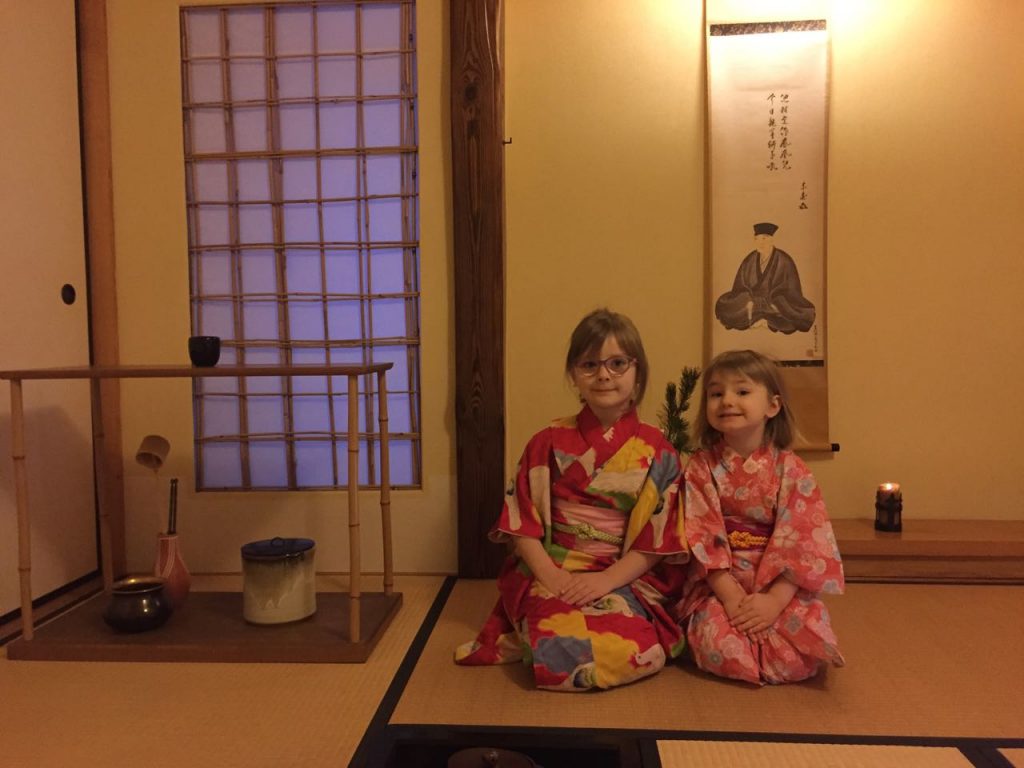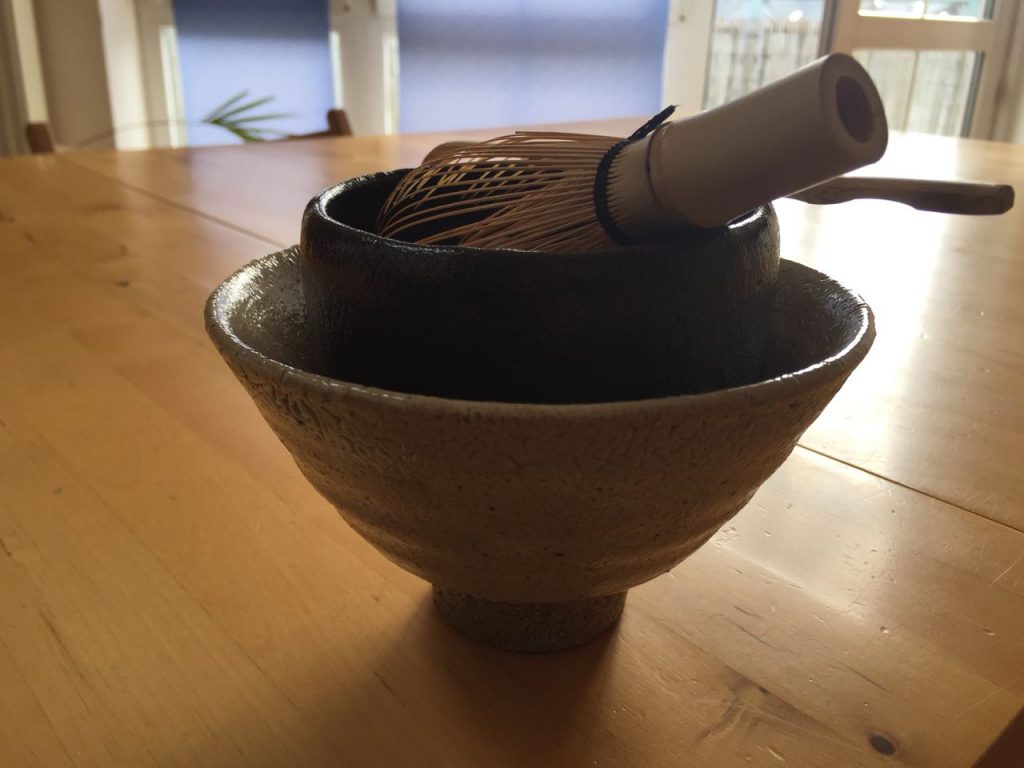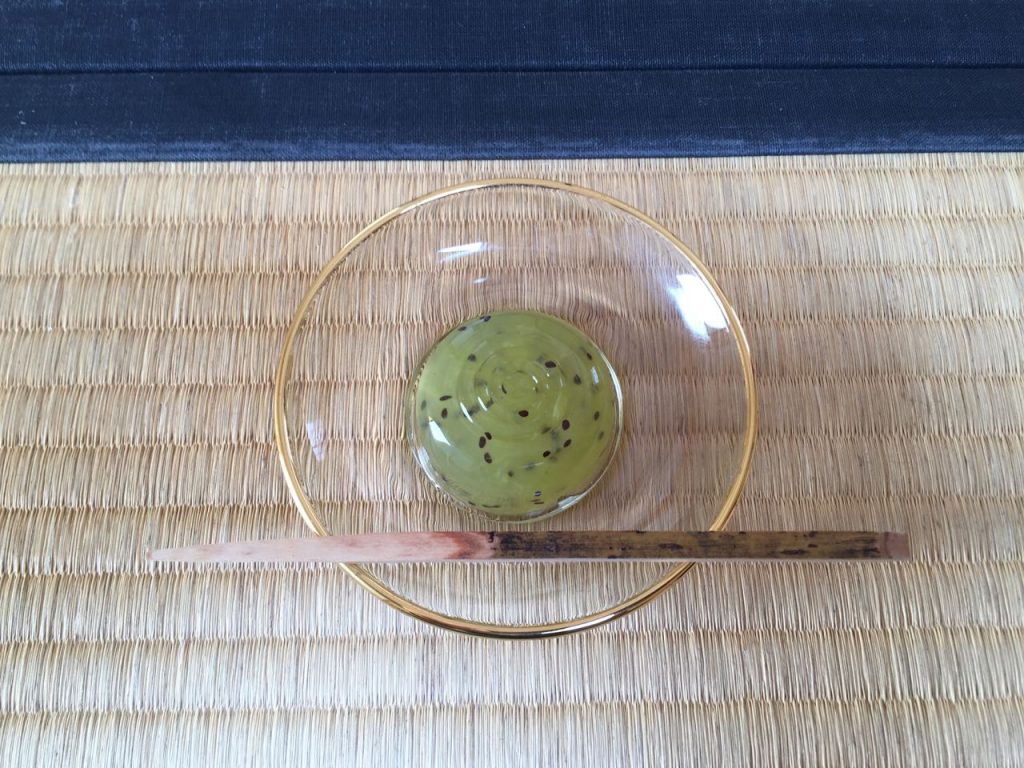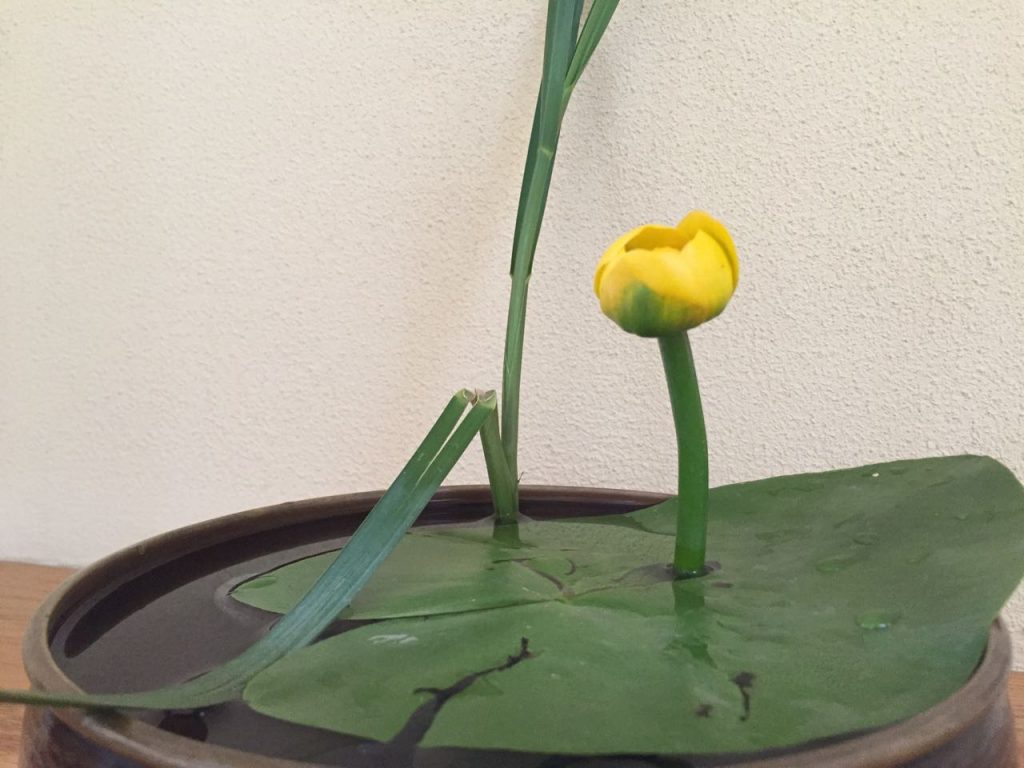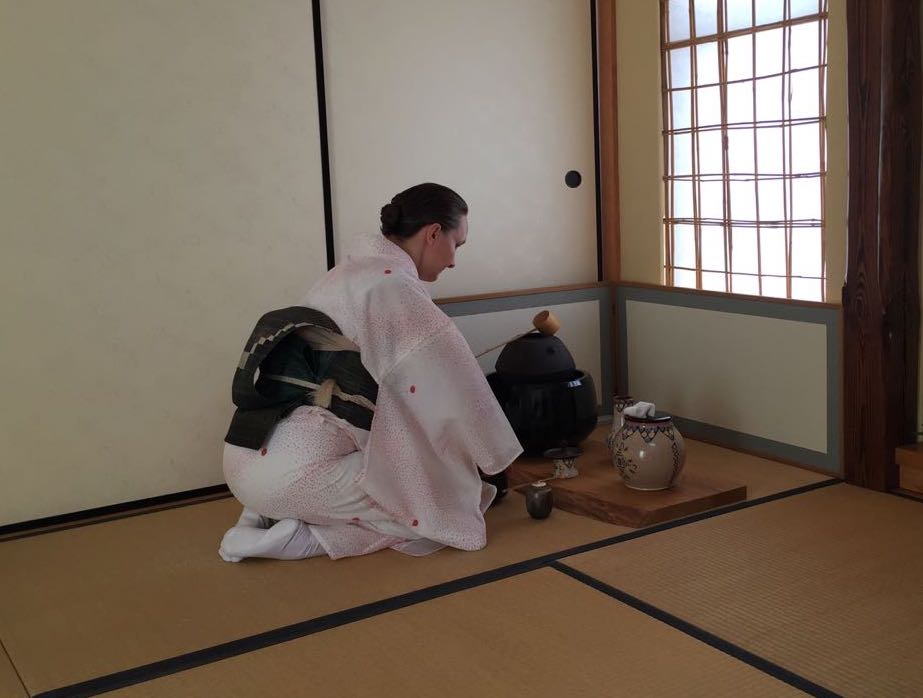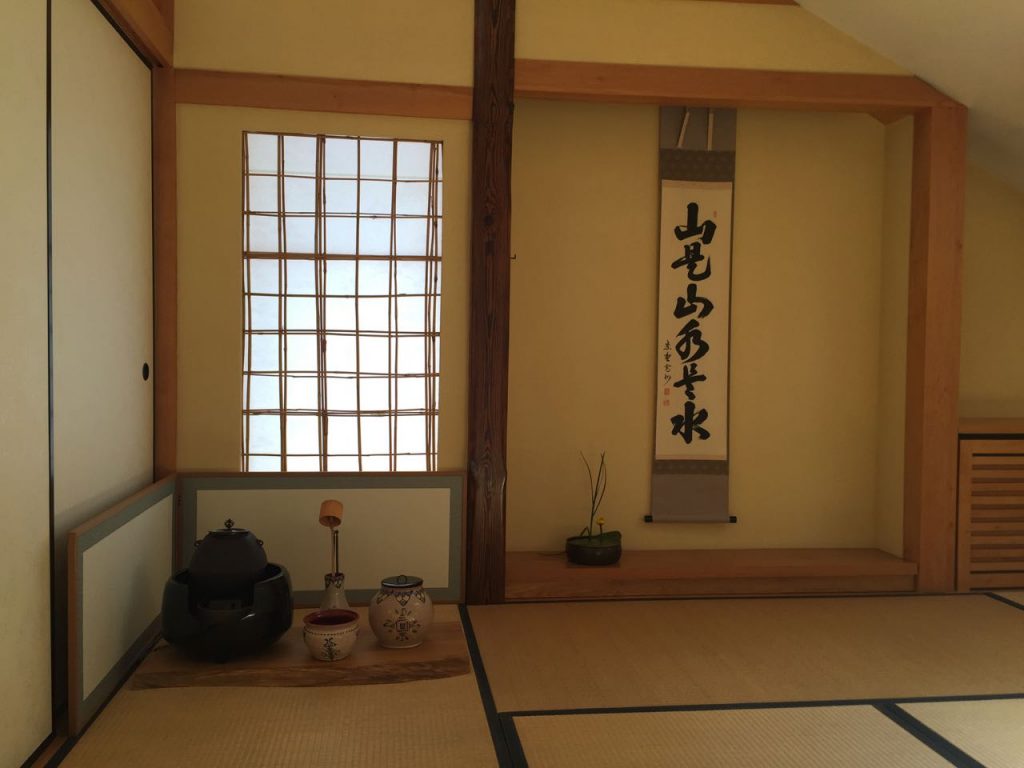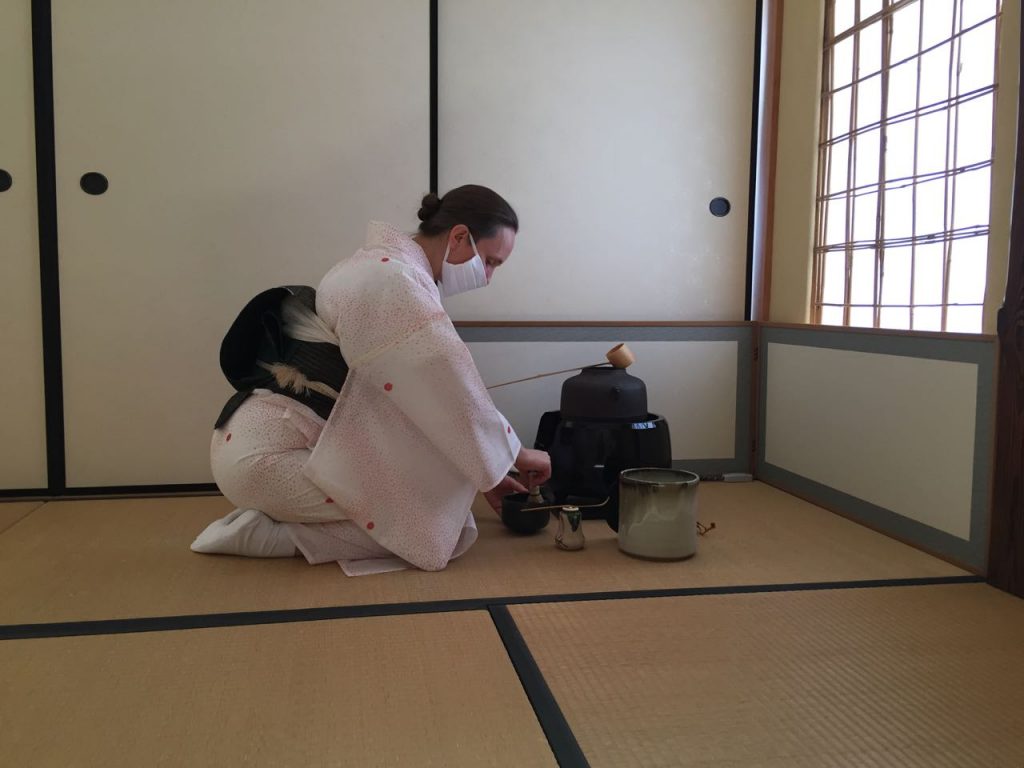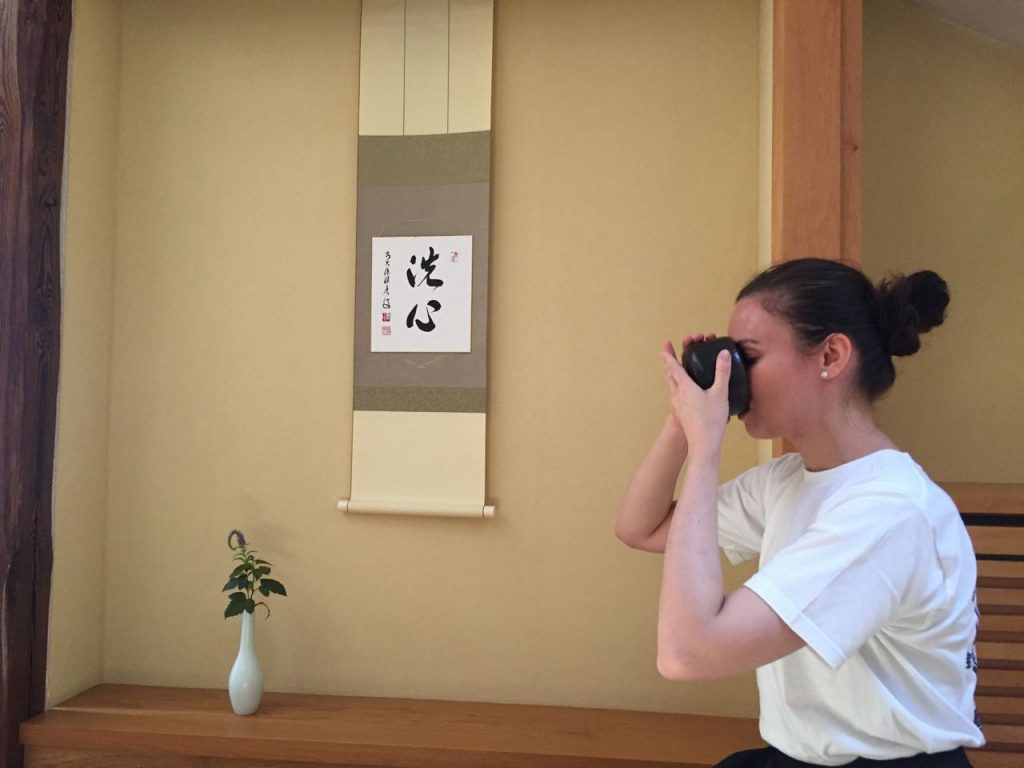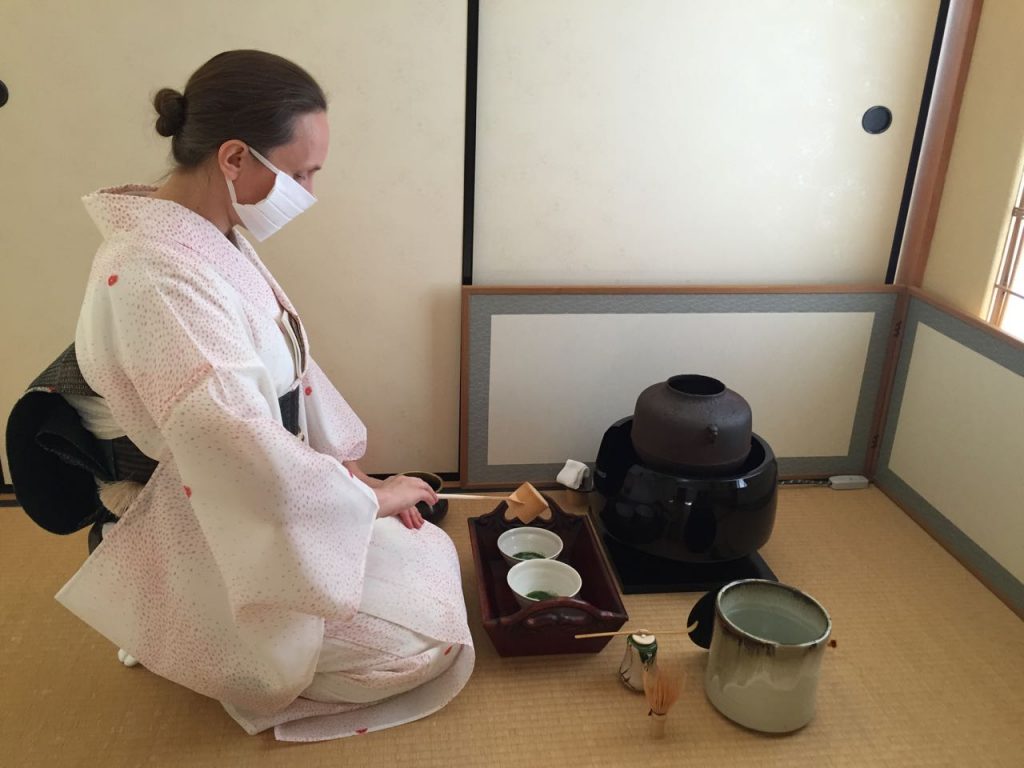So many events skipped, I’ll try to fill in the blanks over time.
Let’s talk about the Warsaw Summer Workshop while it’s still fresh!

After a welcoming dinner in old town Warsaw
This year, somehow, the word about our workshop continued to spread and we were privileged to receive participants from many different places. Of course some of our own members were here to host six members of the Krakow group along with one from Hungary, two from Finland, another Finn who came all the way from Kyoto, and an American from London. All together about 19.3 participants (that’s including 7 month old Gabriela and our fantastic cook/masseur Marcin).

Many of the participants
One reason we were able to draw a member from Japan is because we focused heavily on practicing the shichijishiki this year. The shichijishiki are a set of group forms devised in the 18th century in part to enlist many participants in one practice and based somewhat on the seven practices in Zen temples.
Each day started with light exercise to wake up,

wake up

stretch?

relax
some meditation to focus,

meditation introduction
and some food for sustenance before delving into all the forms.

breakfast
These group forms, like any other, require repetition in order to learn; however, they require a knowledge of all the basic forms as well as having a sufficient number of people in order to practice them.

basic charcoal form
Each night we did our best to try out other aspects of chanoyu, making Japanese sweets, making tea scoops and making kobukusa.

Rikyu manju

Goldfish made of sweet bean paste swimming over sweet sesame sand.

bending chashaku
The first day, as always, we began by refreshing the basic elements of tea practice, sitting, standing, walking, bowing, and preparing the utensils. We then discussed the history of the group forms and talked a little about each one.

you can never practice walking too much
That afternoon we practiced the most common of the group forms, Kagetsu. Kagetsu is a form that can be practiced in many different ways and in which each participant must be ready to change places with any other to do whatever task is at hand.

sumi tsuki kagetsu

koicha tsuki kagetsu
The second day was spent at Kaian, the Japanese tea house at Warsaw University. There we practiced more Kagetsu, specifically the types that can be carried out in a 4 1/2 mat room. We also did a little practice in the 2 3/4 mat room for some close tea sharing with each other.

drawing for the initial roles (in the huge corridor)

4.5 mat kagetsu

daime koicha
On the third day we hit the more difficult forms, or at least those less practiced. We started with Shaza, a form where each person takes care of a different task; arranging flowers, making the charcoal fire, preparing incense, making the thick tea, and making the thin tea.

incense preparation in Shaza
Next we practiced Chakabuki, a form where each person drinks two different thick teas, the consumers are informed of the names of each. Then three more thick teas are prepared randomly and each person must guess which tea they are drinking, the first, second, or a third mystery tea.

bringing in the “ballots”

tasting the tea

showing the tea type to the record keeper
In the afternoon we practiced Senyū. This form is somewhat similar to Shaza above except each element is modified and/or expanded on: instead of one person arranging the flowers everybody takes a turn doing it, the charcoal fire is done honsumishomo style so the guest actually only puts in the charcoal, two types of incense are prepared, thick tea is made for everyone, and the thin tea is carried out as in Kagetsu.

charcoal element of Senyu
Of course anytime there was extra time we tried to fit in an extra Kagetsu.
One the last day we practiced a form called Ichi-ni-san which enables each participant to give a review of the tea form done for them by the host.

checking her “score”
We also practiced Kazucha, a form wherein each participant will have a sweet, make tea and drink tea all in random order. We then used this form in our closing tea gathering that afternoon.

Kazucha beginning bow

in the midst of Kazucha
The closing chakai started with the charcoal, an excellent bowl of thick tea, and then everyone participating in Kazucha for their thin tea.

Chakai set-up for charcoal

Koicha L

koicha center

koicha R

Kazucha during chakai 1

Kazucha during chakai 2
We were busy from early morning to late night everyday but we still tried to have a little party to wrap up the event. As usual, most everyone was too tired to notice. That’s how we can tell if people had a good workshop, when they pass out when it is over.

wild party
Thanks to everyone for making the workshop another special event and for coming together to share tea with us here in Warsaw. See you next year!
-Extra shots of the kiddo-

These are my tatami

Hey, what are you doing to my foot?

Ready to work out

I see you think it’s your turn to talk again Dad

Yes, give me the talking stick

Maybe I should do the talking

No no no bring it back I have things to say, Mom let go

I’m here for my koicha
